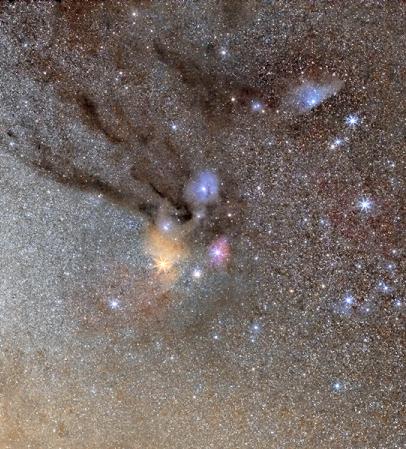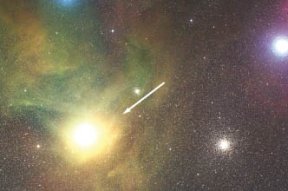 |
 |
loosely grouping of between 10 and 100 O stars and B stars, scattered across a region up to several hundred light-years across. The Scorpius OB association is a loose group of stars as shown in Figure 06-04a. This group contains many hot, extremely luminous OB-type stars. It is the site of recent star formation. The stars in such groups are mostly not gravitationally bound but are expanding away from some common center, which presumably marks their birthplace.
A study indicates that the Scorpius association has had 20 supernova explosions over the past 11 million
|
|
|
years. The bright, bloated Antares in Figure 06-04b (the yellow star in Figure 06-04a) is the next star likely to explode. |



